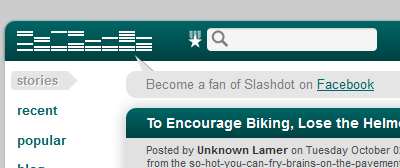CHI is the premier international conference on human computer interaction, and this year’s event is looking to be the most exciting yet for the St Andrews Computer Human Interaction (SACHI) research group.
Contributions to this year’s event come from several group members, and SACHI will be well represented with seven researchers in attendance: Professor Aaron Quigley, Dr Per Ola Kristensson, Dr Miguel Nacenta, Jakub Dostal, Michael Mauderer, Shyam Reyal, and Jason T. Jacques.
SACHI group members co-authored three full papers this year, on topics as broad as gesture-based interaction, tactile feedback, and text entry.
Papers
- Memorability of Pre-designed and User-defined Gesture Sets
Miguel A. Nacenta, Yemliha Kamber, Yizhou Qiang, and Per Ola Kristensson- The Effects of Tactile Feedback and Movement Alteration on Interaction and Awareness with Digital Embodiments
Andre Doucette, Regan Mandryk, Carl Gutwin, Miguel Nacenta, and Andriy Pavlovych- Improving two-thumb text entry on touchscreen devices.
Antti Oulasvirta, Anna Reichel, Wenbin Li, Yan Zhang, Myroslav Bachynskyi, Keith Vertanen, and Per Ola Kristensson
In addition, Miguel Nacenta and Per Ola Kristensson will have their note published regarding the perfomance and ergonomics of multi-touch rotation manipulations.
Note
- Multi-Touch Rotation Gestures: Performance and Ergonomics
Eve Hoggan, John Williamson, Antti Oulasvirta, Miguel Nacenta, Per Ola Kristensson, and Anu Lehtiö
In a collaborative work, three SACHI group members will present their work in progress, demonstrating an innovative method to improving the estimation of user distance.
Work In Progress
- The Potential of Fusing Computer Vision and Depth Sensing for Accurate Distance Estimation
Jakub Dostal, Per Ola Kristensson, and Aaron Quigley
Engaging with the research community is also central to SACHI’s goals, and CHI will be no exception with SACHI members hosting a special interest group and two separate workshops.
Special Interest Group
- Visions and Visioning in CHI: A CHI 2013 Special Interest Group Meeting
Organisers: Aaron Quigley, Alan Dix, Wendy E. Mackay, Hiroshi Ishii, and Jürgen Steimle
Workshops
- Grand challenges in text entry
Organisers: Per Ola Kristensson, Stephen Brewster, James Clawson, Mark Dunlop, Strathclyde, Leah Findlater, Poika Isokoski, Benoît Martin, Antti Oulasvirta, Keith Vertanen, and Annalu Waller- Blended Interaction, Envisioning Future Collaborative Interactive Spaces: A CHI 2013 Workshop
Organisers: Hans-Christian Jetter, Raimund Dachselt, Harald Reiterer, Aaron Quigley, David Benyon, and Michael Haller
SACHI’s will be also be well represented in many of these community meetings with five co-authored workshop papers.
Workshop Papers
- Visual Focus-Aware Applications and Services in Multi-Display Environments. In CHI 2013 Workshop on Gaze Interaction in the Post-WIMP World
Jakub Dostal, Per Ola Kristensson, and Aaron Quigley- Do we need a standard for
evaluating text entry methods? In CHI 2013 Workshop on Grand Challenges in Text EntryAntti Oulasvirta and Per Ola Kristensson.- Combining Touch and Gaze for Distant Selection in a Tabletop Setting. In CHI 2013 Workshop on Gaze Interaction in the Post-WIMP World
Michael Mauderer, Florian Daiber, and Antonio Krüger- Developing Efficient Text Entry Methods for the Sinhalese Language. In CHI 2013 Workshop on Grand Challenges in Text Entry
Shyam Reyal, Keith Vertanen, and Per Ola Kristensson- Authorship in Art/Science Collaboration is Tricky. In CHI 2013 Workshop on Crafting Interactive Systems
Lindsay MacDonald, David Ledo, Miguel A. Nacenta, John Brosz, and Sheelagh Carpendale
Academic service is important to the research community and SACHI will be giving back at this year’s CHI. Professor Quigley is serving as an associate chair in the Interaction Using Specific Capabilities or Modalities subcommittee, as well as serving as a session chair during the event, and Dr Kristensson serves as an associate chair for the Interaction Techniques and Devices subcommittee. After the event, Professor Quigley will staying on for the Program Committee meeting of the 2013 ACM International Joint Conference on Pervasive and Ubiquitous Computing (UbiComp 2013). Finally, to assist in the smooth running of this year’s conference, SACHI will also provide two student volunteers, Jakub Dostal and Jason T. Jacques.










